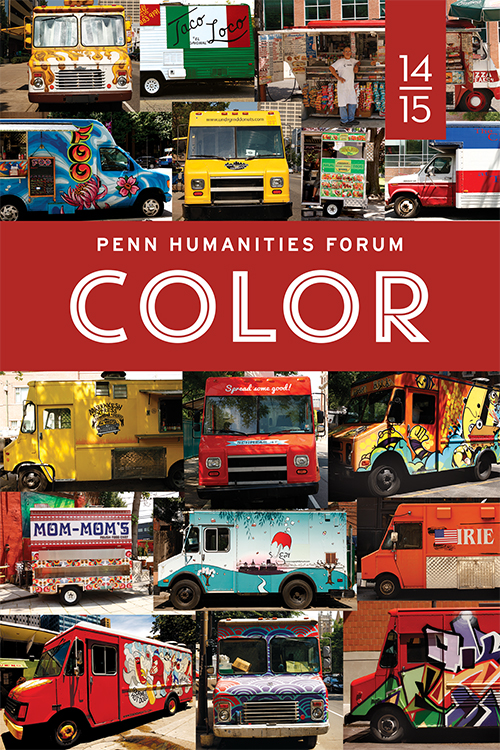Topic Director: Chi-ming Yang
Associate Professor of English
Indigo blue. Saffron yellow. Mummy brown. "Flesh" pink.
Name any color (or color combination), and the associations proliferate: we not only see in color, we speak, hear, and narrate with it. We feel green, we sing the blues, we argue in black and white. But while color seems to be everywhere in our polychrome world, we often take for granted the kinds of scientific discoveries, economic forces, and aesthetic theories that shape our ways of seeing. The history of colors is one of visual cognition and artistic experimentation, to be sure, but it is also one of global trade and often unsavory quests for new pigments. In the early modern period, Europeans discovered and exploited Mexican techniques of extracting a brilliant red for textile dyes from the bodies of the cochineal insect. In the nineteenth century, Pre-Raphaelite painters made their signature hue a rich brown called mummia, made by grinding up Egyptian mummies as part of a centuries-long trade in embalmed corpses.
Indeed, considering color, in all its diversity, means considering both its material properties and the politics of perception. How can we study visual surfaces alongside the things and people that they often define? What are the social and symbolic constructions of color? In the West, color theory generally suggests a philosophical tradition extending from Enlightenment thinkers like Isaac Newton or Johann Wolfgang von Goethe to the aesthetics of abstraction in twentieth-century art. Rarely do we see any connection between the color field of Mark Rothko and the color line of W.E.B. Du Bois. But aesthetics and politics have much to say to one another. The same Enlightenment thinkers who pondered the innate properties of colored surfaces were also investigating the diverse shades of human complexion; they participated in and shaped the expanding colonial regimes of collecting, classifying, and hierarchizing humans alongside plant and animal life. In short, color has long been a productive and contested aspect not just of art but of society as well.
This forum invites a dialogue between innovative artist-practitioners and humanities’ scholars working at the intersection of color and meaning. We will approach the theme of color from many angles, exploring its cultural, economic, and art historical dimensions, its role in human perception and psychology, its relation to literature and music, and its central place in the theory and politics of race. Through our academic programs and our yearlong series of public events, we will open new conversations across and between these various fields, pursuing a kind of synesthesia of the disciplines: a collective thinking in color.
March, 2013
Chi-ming Yang, Topic Director
James English, Director, Penn Humanities Forum



